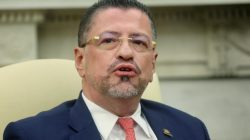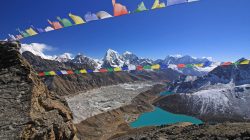As the globe faces intensifying climate effects, loss of biodiversity, and deteriorating oceans, islands emerge as crucial case studies—not merely as locations of susceptibility, but as dynamic settings for resilience, recovery, and ingenuity. Frequently, these places are seen solely as casualties of worldwide conditions, waiting for rescue by outside agents.
However, these areas have long served as testing grounds for ecological restoration, climate adaptation, and scalable conservation strategies that not only build upon but also aid in safeguarding the indigenous and local knowledge, cultural practices, and economic activities of island communities.
The Republic of Seychelles has taken the lead with innovative blue bonds aimed at protecting marine life in the Western Indian Ocean. Similarly, New Zealand’s bold Predator Free 2050 project seeks to restore indigenous bird communities and their habitats. Meanwhile, the Galápagos Islands are working towards enhancing local living standards and reintroducing endangered wildlife. These examples illustrate how extensive environmental restoration can be achieved swiftly even on smaller landmasses like islands.
Mona Island, part of Puerto Rico, stands out as one of the most significant locations in terms of ecology and culture within the island group. Courtesy of Tommy Hall/Island Conservation.
The enclosed ecosystems facilitate rapid and quantifiable outcomes, making them perfect environments to develop and apply nature-inspired approaches that have global potential.
Indigenous communities possess profound understanding of how islands and oceans interconnect, with their traditional knowledge systems highlighting this connection over many generations. Restoring these islands holistically improves oceanic well-being since inland ecological networks significantly contribute to nutrient circulation, which sustains marine life diversity and habitats—such as when seabirds transport nutrients from distant marine areas back onto the land, sometimes covering distances up to several hundred or thousand miles.
Eliminating harmful invasive species introduced by humans from islands significantly boosts native wildlife populations, strengthens the health of coral reefs, and improves local food security.
This collaboration brought together Island Conservation, Scripps Institution of Oceanography at UC San Diego, and Re:wild to establish the Island-Ocean Connection Challenge (IOCC) in 2022. The aim was to collaborate with and gain insights from Indigenous Peoples and local communities, who possess knowledge crucial for managing islands, coastlines, and marine ecosystems effectively. Their expertise highlights the significant connection between land-based and oceanic restoration efforts.
Through collaboration with island communities, their governing bodies, non-governmental organizations, researchers, and funding entities, our objective is to comprehensively rehabilitate 40 crucial island-ocean ecosystems—from mountaintops down to coral reefs—by the year 2030. Currently, twenty island-ocean ecosystems spanning locations such as Palau, New Zealand, France, and beyond, have embraced this initiative. Moreover, up to now, fifty IOCC partners have committed themselves to supporting this worldwide endeavor and contributing to the restoration of these islands.
The IOCC’s efforts rely on the undeniable proof of our impacts collected from initiatives worldwide. Take these achievements into account: on Palmyra Atoll (part of the Pacific’s Northern Line Islands), eradicating invasive predatory rats resulted in a 5,000 percent growth in native tree populations, thereby bolstering nearby coral reef systems that currently attract an increased number of Manta Rays.
On Loosiep Island within the Federated States of Micronesia, intervention measures enhanced traditional farming techniques, thereby decreasing dependence on imported foods. Meanwhile, in French Polynesia, the critically endangered Polynesian Storm-petrel has made a reappearance on Kamaka Island to breed for the first time in a century—just under two years following the initiation of ecosystem recovery initiatives.
Across the globe, these rejuvenated environments sequester additional carbon, offer greater protection against storms, and safeguard distinct indigenous flora. They also bolster nearby fishing industries and enhance marine biodiversity. These rehabilitated islands illustrate the strength of nature’s adaptability when native species are afforded an opportunity to flourish and restore ecological balance.
These successes go beyond mere achievements in community conservation and environmental protection—they symbolize hope through practical answers to the threefold global crisis encompassing climate change, species extinction, and marine ecosystem deterioration. Research indicates that revitalized islands hold potential to sequester vast amounts of carbon—millions of metric tons—and help mitigate shoreline erosion. They also enhance food stability within nearby populations, support approximately double the biomass of fish compared to their degraded counterparts, and facilitate accelerated growth of coral reefs at rates nearly quadruple those observed elsewhere.
These achievements on islands can be scaled up; the limited geographical scope of islands enables organized restoration initiatives whose effects extend well past their borders.
Those concerned with the well-being of our oceans should prioritize investments in land-based conservation projects. The condition of marine habitats is closely linked to the state of islands, and this relationship works both ways. Similarly, individuals invested in supporting island societies and natural landscapes must recognize the importance of restoring nearby aquatic systems as well. Overlooking these interconnections could mean missing out on key strategies for enhancing resilience in both oceanic and insular regions. Demonstrable benefits for community members can encourage increased participation in safeguarding ocean resources.
The ability of extensive oceanic island nations and regions to serve as models for addressing worldwide challenges far exceeds their size. If we view these islands not merely as isolated outposts but rather as centers of creativity, rejuvenation, and fortitude, we can fully tap into the strength of what could be termed “our archipelago,” realizing their complete capability—not only to secure their future but also to guide the recuperation and wellbeing of our globe.
The decision is straightforward: prioritize strengthening the resilience of island-ocean systems alongside local communities today, or risk losing invaluable biodiversity, cultural heritage, and effective answers to our foremost global issues. The world’s island communities are poised to take the lead. This moment presents an unparalleled opportunity to support these islands.
Dr. Penny Becker
is CEO, Island Conservation;
Dr. Stuart Sandin
serves as a Professor of Biological Oceanography at the Center for Marine Biodiversity and Conservation, Scripps Institution of Oceanography
Wes Sechrest
is CEO, Re:wild
IPS UN Bureau
Follow @IPSNewsUNBureau
Provided by SyndiGate Media Inc.
Syndigate.info
).





